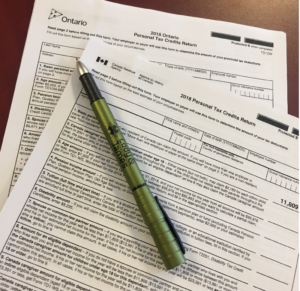Written by: Gwyneth James MBA CPA, CGA Senior Partner
It’s your first day on the job and you’ve been handed a pile of paperwork to complete and sign plus the employee policy manual to read and a Health & Safety video to watch. In the midst of the chaos, you probably don’t understand – or care – what the significance of the TD1 forms are. But they are important and can cause big problems if they aren’t completed properly.
There’s even a penalty levied by CRA on employees who do not provide their employer with a completed TD1 form within seven days – $25 per day, minimum $100, maximum $2,500!
One of the purposes of the TD1 form is to inform the payroll department about the personal tax credits you usually claim on your tax return. If you are able to claim credits beyond the basic personal amount (examples are Family Caregiver Amount, eligible dependant, or disability tax credit), this form will allow your employer to deduct less tax at source. You will have more money in your hands throughout the year instead of having to wait for a refund the following spring.
Another purpose of the TD1 form is to instruct your employer to deduct additional tax each pay. This is useful if you have rental or investment income or are running a small business on the side. It will reduce the amount you have to pay in the spring when all your sources of income are added together, possibly pushing you into a higher tax bracket.
If you are working more than one job, be aware you can only claim the personal tax credits on one form. For the other employers, you will sign the TD1 form with a zero for the tax credits so every dollar you earn has tax withheld.
TD1 forms are in effect with your employer until you provide new ones, so be sure to complete an updated set if your tax situation changes.
